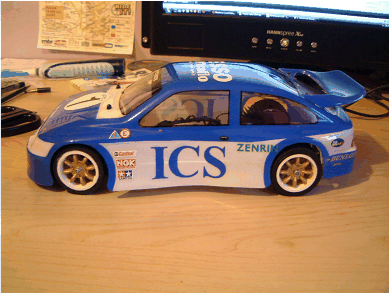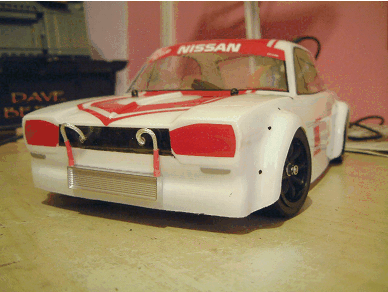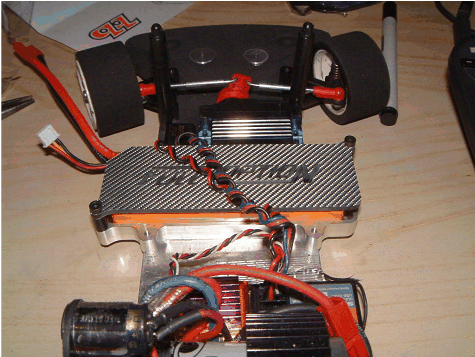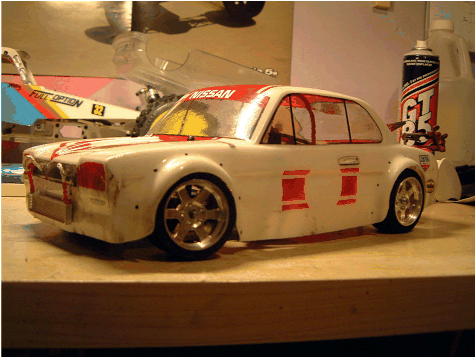The Mardave V12 is a very simple circuit racing car made in the UK. A lot of clubs run them as a beginner class as they are exceptionally robust and very cheap to buy. However, they can be made to lap extremely quickly given the correct set up and a sprinkling of the right upgrade parts. I started racing them as the class is large and popular at our club (Gloucester) and any class with a lot of competition is always fun. I've had some success racing this class so here is my breakdown of what it takes to run at the front of the pack on a carpet track with a V12.
Tyres
The number one thing to get right. These make much more difference than anything else. Fundamentally what these cars need is hard front and soft rears. Exactly how hard/soft depends on the track and the other components and car set up. But I have found what suits me best is JAP 52 shore fronts and medium pinks on the rear. The Gecko G30 and G35 tyres are also excellent on the rear (do not use these up front, they are way too soft). If your car has a tendency to spin out under the slightest power in the corners, first check the tyre specs. Almost always this is the problem, i.e. too soft on the front. I buy all my tyres from
Kamtec, its a quality online shop with good prices and good stock - just what you need.
The softer rear tyres (i.e. the Geckos) do not need additive at all. If I am running the pink meds I put some additive on them (rears only) before the first run, but as the track cleans up and more additive goes down during the meeting they don't need any further applications. Do not be tempted to use additive up front, ever. The hard tyres are there for a reason, with too much front grip these cars are almost undriveable.
Steering and suspension
The front caster angle is set crudely on the V12, by placing spacers under the front mount points on the suspension arms. I use more than most - 4.5mm of spacers. This helps the car track nice and straight, yet it still has plenty of response on initial turn-in. Because the wheelbase is short on the V12, most of the tuning you do on the car is hunting for stability and consistency. The cars are naturally grippy and agile almost to a fault.
The rear suspension should be set soft, with about 1.5mm or so of sag. Make sure the central damper 'rod' is not sticky, this can be a source of inconsistent cornering behaviour.
Choose the fastest steering servo you can afford. Because the cars are twitchy and rapid through tight corners, you can not have a servo that is too fast. It will make the car feel more natural and help catch those slides as quickly as possible. I run a high spec Sanwa digital servo running at 0.07s per 60 degrees on 6V.
Driveline
It doesn't get much simple than a 2-gear train directly on to the rear axle. There is a diff available for the V12 and it makes a big difference to the handling - I consider it an essential upgrade. Get the 48DP gear version as the gear ratio tuning options are greater and the gaps between ratios are smaller. You'll also find spare spur gears much easier to source. Slapping in a couple of bearings for the axle is a cheap and nice upgrade. One comment on the diff is that the drive-side hub will only accept 6-spoke wheels. This is really annoying and pointless, I have modified several club members' hubs by machining extra slots in the hub so that 4, 6 and 8 spoke wheels can all be fitted. My own car runs a custom made aluminium diff hub with the multi-option slots of course.
Most clubs restrict the motor spec on the V12 to something fairly lowly so I won't comment much on the motor. There's no need for anything silly anyway, the cars are pretty fast even with a standard 540.
Body
There are some great bodies available from Kamtec. They really increase my enjoyment of this class. Just don't go with an ABS body. Heavy and delicate. The lexan bodies are far better in every way.
Other upgrades
Now we're talking. Aside from the custom diff hub, I am also running a home made bumper mount (stragely lacking in the standard kit - no idea why), Full Option LiPo battery case and a full set of machined Rays TE37 replica alloy wheels. The battery case bolts straight down to the chassis and allows the use of Loong-Max Tipple 2300 2S LiPo packs, the best battery for the Mardave V12. It is physically small, cheap (£11 at
Giant Cod) and packs a mighty punch due to super-low internal resistance. It doesn't overload the chassis like a heavy 6-cell NiMh, and because of the design of the case you can flip the pack forward or backwards to change the weight distribution if required. These packs are 5C charge capable, so in theory can go from flat to full in 1/5 of an hour (12 min). In reality it just means there is no problem topping up the pack between heats, so that you only need a single battery for a whole meeting. I only use 1000-1300 mAh of charge per 5 minute race.






